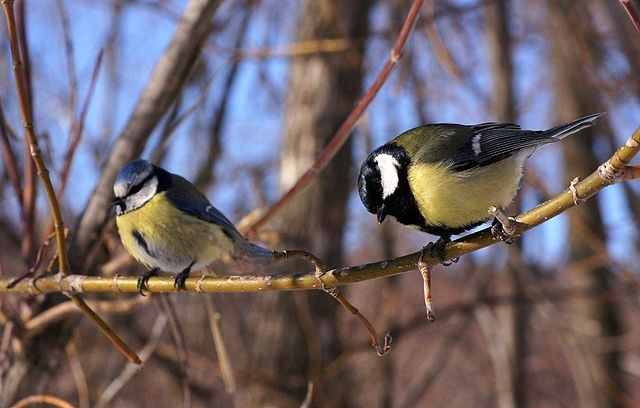Birds are abandoned when beauty fades
When the sexiness of females is reduced, the males will be less likely to nest, but rather outside the nest, the number of feeding offspring will also decrease.
>>>Rural birds find it difficult to 'marry' their cities
Corn sharing is a bird with blue and yellow fur. They live and settle in Europe and Western Asia. Both males and females live with many partners throughout their lives. The hair tips on the top of their heads reflect ultraviolet rays. The greater the ability to reflect ultraviolet rays, the higher the bird's attractiveness.
Since the 1970s, ornithologists have known that most birds can sense ultraviolet rays, like many insects, spiders, fish, reptiles and even some mammals (rodents). ). The bird's retina has a fundamental difference: While there are only three types of cones sensitive to red, green and blue light, humans have one more type of cell sensitive to ultraviolet rays. Violet. Therefore, people's feelings about the surrounding world are not like birds.

The top of the head is a measure of the attractiveness of the blue finches.
To explore the role of 'beauty' in the pair life of the blue corn sparrow, a specialist group of the Konrad Lorenz Custom Institute in Austria lubricates the ultraviolet-blocking chemical into the hair on the top of the head. some female birds, AFP reported.
They also put oil on the hairs of some other females, but the oil does not contain ultraviolet blocking chemicals, to ensure that the smell of oil is not the cause of the male alienation.
The results showed that, after the feathers on the heads of the female heads lost their ability to reflect the ultraviolet rays, the single time of the male birds increased and the number of times to bring the bait to the nest to feed their children also decreased.
A similar situation does not occur in an oiled female group that does not contain ultraviolet blocking chemicals.
'The degree of ultraviolet reflection of the top of the female head plays a big role in the investment of the male in taking care of the baby. The number of retransmissions to the male nest of the male will decrease if the ability of ultraviolet light reflection on the head of the female head drops , 'the team concluded.
Matteo Griggio, a member of the research team, said the male corns spend more time on independent activities, even though they perform those activities near their nest.
'Perhaps the male wanted to keep the other female more attractive during the following breeding season , ' Griggio said.
The research team said that due to the "euphoria" of males, corn finches must spend a lot of time preening to maintain "beauty" . In the wild, the ability of the bird to reflect ultraviolet rays is reduced by dust, air pollution or the presence of parasites on the bird's body.
- Beautiful set of photos about wild ruins throughout the planet
- Birds also know beauty
- The wild, mysterious beauty of God's abandoned homes
- The castles are deserted with beauty
- Beauty of birds in the South Central Highlands
- The story of birds
- Touching the scene of cat rescuing abandoned children in the snow
- Birds never ... fly
- Being 'abandoned' by the wife for raising a good child
- Everyone wants to be beautiful, but bad
- Animal photos: The beauty of the Tu-birds
- The beauty of the bird of choice is Peru's national flag
 Animal 'suffering' after hibernation
Animal 'suffering' after hibernation Why do goats climb well?
Why do goats climb well? Scientists were surprised to see chimpanzees eating turtles
Scientists were surprised to see chimpanzees eating turtles Giant catfish died deadly due to drought in Thailand
Giant catfish died deadly due to drought in Thailand